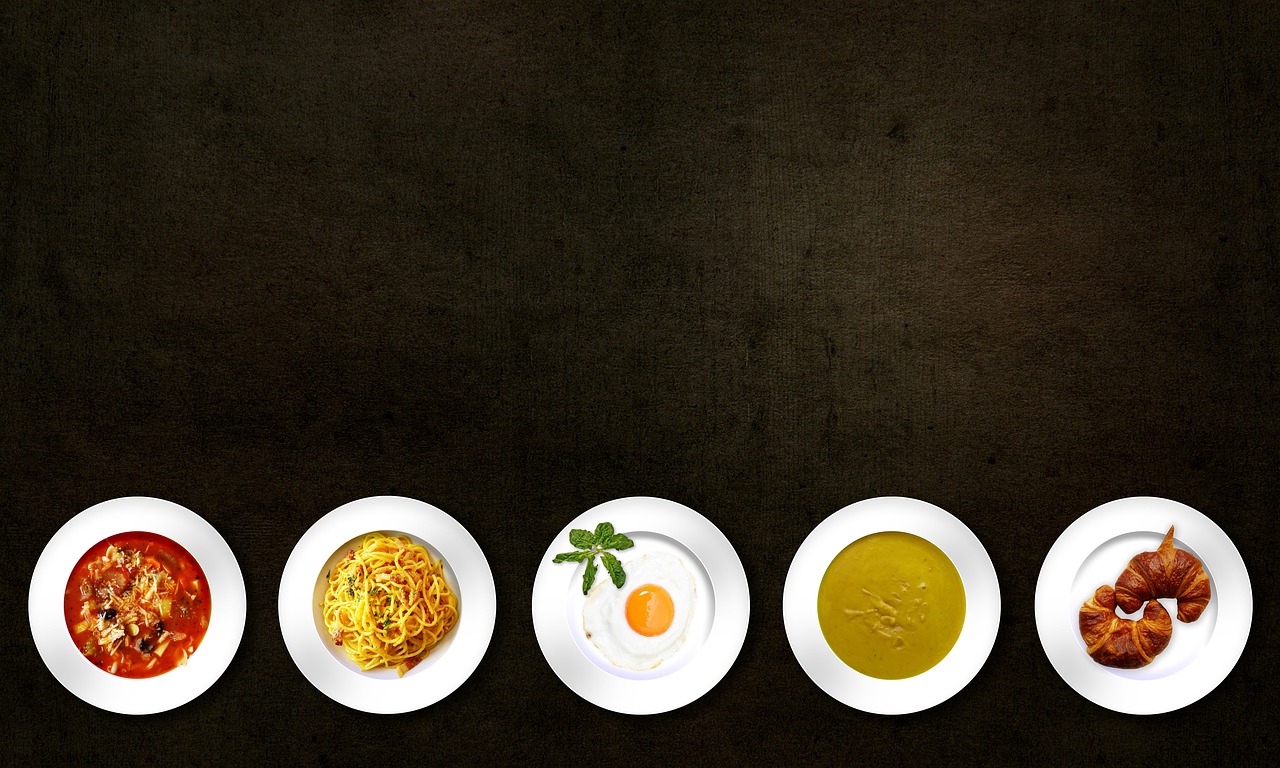Carbohydrates are essential nutrients that provide the body with energy. They are one of three macronutrients, along with proteins and fats, that are necessary for survival. Carbohydrates are the primary source of fuel for the body, as they are converted into glucose and released into the bloodstream to power the body's cells.
However, not all carbohydrates are created equal. Some carbohydrates release energy quickly, causing a spike in blood sugar levels, [1] while others provide a slower and more sustained release of energy. [2] These are what we call slow release carbs, and generally having them in your diet stops you from getting hungry through the day. This difference in energy release is measured by the Glycemic Index (GI), [3] which is a scale that ranks carbohydrates based on how quickly they raise blood sugar levels. As you would expect prioritizing lower glycemic index foods can be particularly effective for helping to maintain a healthy weight. [4]
Understanding the Glycemic Index
The Glycemic Index (GI) is a tool used to measure the rate at which different foods release glucose into the bloodstream. Foods with a high GI value (70 or above) release glucose quickly, leading to a rapid increase in blood sugar levels. [5] This tends to be processed foods, candy and the like. But, this also includes things like pasta and fries.
On the other hand, foods with a low GI value (less than 55) release glucose slowly, resulting in a more gradual and sustained release of energy. This is your green vegetables, sweet potato, lentils etc.
The American Diabetes Association (ADA) categorizes low GI foods as those with a GI score of less than 55, while medium GI foods have a score between 56 and 69, the middle ground is a little tricky. And cooking time can often effect these foods and the way they are cooked, pushing them from mid to high quite easily. High GI foods have a score of 70 or above. [6]
By choosing low GI foods, individuals can help regulate their blood sugar levels and maintain a more stable energy supply throughout the day.
Factors That Can Change The GI Index Of Foods
Overcooking food actually raises it's GI, meaning it will release the energy quicker. Think of the cooking process as partially pre digesting your meal. On top of that the ripeness of food can change how slowly the carbs release. [7]
For example ripe bananas have a GI of 51, overripe bananas can go up to 58 making them mid range, with slightly under-ripe bananas going as low as 42. [8]
What Is The Glycemic Load?
Occasionally you may see something called the glycemic load of food, essentially this is the glycemic index with portion size factored in, so it accounts for the total amount of carbohydrates in the item, not just how quickly the carbs are metabolized. [9]
Generally it's recommended to keep your daily glycemic load below 100. And in terms of foods we consider a Low GL to be 10 or less, Medium GL is11 to 19 and High GL is 20 or higher.
To work out the glycemic load we take the glycemic index (GI) and multiply it by the grams of available carbohydrate in the food, and then divide by 100. [10]
So to use bananas as an example again they have about 23g of carbs, so would have somewhere between 13 and 11 assuming they're not overripe.
The Health Benefits of Low GI Foods
Incorporating low GI foods into your diet can offer several health benefits. Here are some of the advantages of consuming slow-release carbohydrates:
Improved Blood Sugar Control: Low GI foods have a minimal impact on blood sugar levels, making them a suitable choice for individuals with diabetes or those looking to manage their blood sugar levels. These foods help prevent sudden spikes and crashes in blood sugar, providing a more stable source of energy. [11]
Weight Management: Low GI foods tend to be more filling and satisfying than high GI foods. They digest slowly, keeping you fuller for longer and reducing the likelihood of overeating. By incorporating these foods into your diet, you may find it easier to maintain a healthy weight or support weight loss efforts. [12]
Sustained Energy: Slow-release carbohydrates provide a steady and prolonged release of energy. This sustained energy can help you stay fueled throughout the day, improve endurance during physical activity, and prevent energy crashes. [13]
Improved Heart Health: Many low GI foods are rich in fiber and nutrients, which can contribute to better heart health. These foods often contain less saturated fat and cholesterol, reducing the risk of heart disease. [14]
Reduced Risk of Chronic Diseases: A diet that includes a variety of low GI foods, such as fruits, vegetables, whole grains, and legumes, has been associated with a lower risk of chronic diseases like type 2 diabetes, certain cancers, and cardiovascular disease. [15]
Slow-Release Carbohydrates from Different Food Groups
Slow-release carbohydrates can be found in various food groups. Here are some examples of slow-release carbs within common food groups:
Fruits:
- Cherries
- Plums
- Grapefruit
- Apples
- Pears
- Grapes
- Oranges
- Prunes
- Dried apricots
- Kiwi
- Peaches
These fruits have a glycemic index of 55 or less, making them excellent choices for slow-release carbohydrates. Incorporating these fruits into your diet can provide a steady source of energy while offering essential vitamins, minerals, and antioxidants.
Vegetables:
- Peas
- Carrots
- Eggplant
- Cauliflower
- Broccoli
- Onions
- Lettuce
- Tomatoes
- Green beans
- Red peppers
Slow-release vegetables are not only a good source of energy but also low in calories and high in fiber, potassium, folate, and vitamins A and C. Including these vegetables in your meals can support overall health and reduce the risk of heart disease and certain types of cancer.
Grains:
- Oat bran
- Rolled oats
- Whole-grain pumpernickel bread
- Whole-wheat bread
- Spaghetti
- Brown rice
- Pearled barley
- Wheat tortillas
These slow-release grain options provide sustained energy and are higher in fiber compared to their refined counterparts. Opting for whole grains can help regulate blood sugar levels, promote healthy digestion, and provide essential nutrients.
Legumes:
- Kidney beans
- Butter beans
- Chickpeas
- Black-eyed peas
- Navy beans
- Lentils
- Yellow split peas
Legumes are an excellent source of slow-release carbohydrates and also offer protein, zinc, and iron. Adding these beans and peas to your meals can enhance energy levels, provide essential nutrients, and contribute to a balanced diet.
Dairy:
- Skimed milk
- Fat-free and sugar-free yogurt
- Skyr
- Kefir
While dairy products contain lactose, a type of sugar, low-fat options like skim milk and fat-free, sugar-free yogurt can be included as slow-release carbohydrates. An 8oz glass of milk actually has about 12g of carbs on average. These choices provide calcium, protein, and other essential nutrients while minimizing the intake of saturated fat. [16]
Considerations When Following a Low GI Diet
When incorporating slow-release carbohydrates into your diet, there are a few important considerations to keep in mind:
Individual Variations: Everyone's body reacts differently to carbohydrates, so it's essential to monitor your own blood sugar levels and observe how different foods affect you personally.
Balanced Diet: While slow-release carbohydrates offer numerous benefits, it's important to maintain a well-rounded diet that includes a variety of nutrient-dense foods. Incorporate lean proteins, healthy fats, and a range of fruits and vegetables to ensure you're meeting your nutritional needs.
Portion Control: Even slow-release carbohydrates should be consumed in moderation. Pay attention to portion sizes and aim for a balanced plate that includes a mix of macronutrients.
Cooking Methods: Cooking can affect the glycemic index of certain foods. For example, overcooking pasta can increase its GI. Opt for cooking methods that help retain the slow-release properties of carbohydrates, such as steaming vegetables or cooking pasta al dente. Cooking methods can also alter the thermic effect of food, meaning that your body will use less calories to process the food itself. Meaning that the longer you cook something the less energy your body has to use to break it down. [17]
Why You Need To Know What Slow Release Carbs Conclusion
By understanding the benefits of slow-release carbohydrates and incorporating them into your diet, you can support stable energy levels, blood sugar control, and overall health. Considering your glycemic load can make dieting and weight management substantially easier and is all in all a good way to take control of your health. Certain elements such as cooking time and ripeness are generally not considered by most people and being aware of this can help people regulate diet throughout the day more easily.
References
1 - https://www.ncbi.nlm.nih.gov/books/NBK459280/
2 - https://www.ncbi.nlm.nih.gov/pmc/articles/PMC4933791/
3 - https://www.ncbi.nlm.nih.gov/pmc/articles/PMC7352659/
4 - https://www.ncbi.nlm.nih.gov/pmc/articles/PMC8778967/
5 - https://www.ncbi.nlm.nih.gov/pmc/articles/PMC8281178/
6 - https://diabetesjournals.org/care/article/31/12/2281/24911/International-Tables-of-Glycemic-Index-and
7 - https://www.ncbi.nlm.nih.gov/pmc/articles/PMC6261173/
8 - https://www.ncbi.nlm.nih.gov/pmc/articles/PMC8266066/
9 - https://pubmed.ncbi.nlm.nih.gov/34258626/
10 - https://www.ncbi.nlm.nih.gov/pmc/articles/PMC2584181/
11 - https://www.ncbi.nlm.nih.gov/pmc/articles/PMC5240084/
12 - https://pubmed.ncbi.nlm.nih.gov/34352885/
13 - https://www.ncbi.nlm.nih.gov/pmc/articles/PMC5154680/
14 - https://www.ncbi.nlm.nih.gov/pmc/articles/PMC7458777/
15 - https://pubmed.ncbi.nlm.nih.gov/18326601/
16 - https://www.ncbi.nlm.nih.gov/pmc/articles/PMC4224210/
17 - https://www.ncbi.nlm.nih.gov/pmc/articles/PMC3228431/




